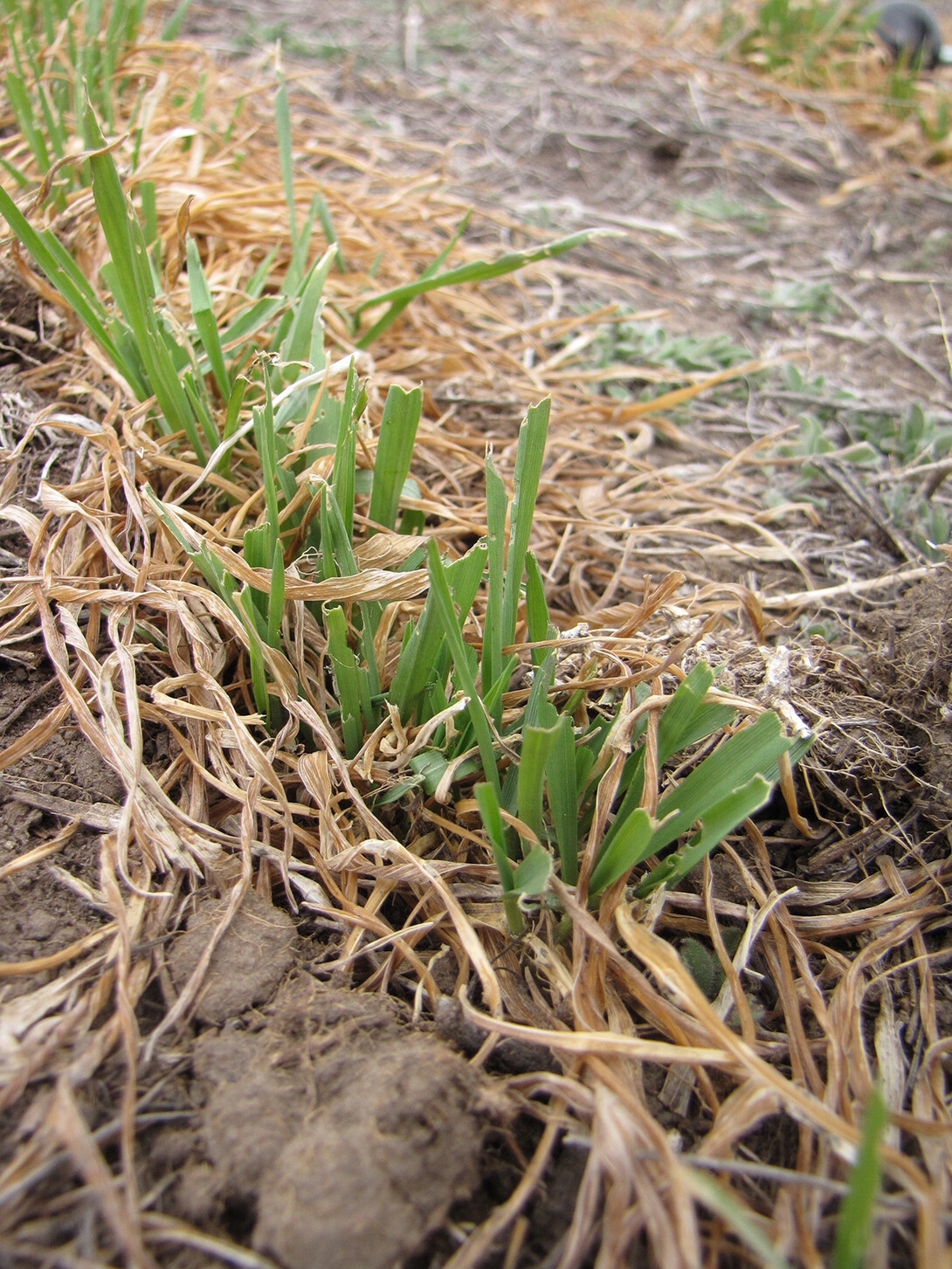
Lincoln, Neb. — With the recent warm weather in Western Nebraska, army cutworms have been spotted in southern Sioux County and central Lincoln County. With spring approaching, this pest may be seen in Nebraska crop fields in the near future. It is an important time to scout for army cutworm, particularly in winter wheat and alfalfa.
Of the many cutworm species in Nebraska, the army cutworm is the most damaging in western Nebraska causing damage to alfalfa, wheat, sugarbeet, canola, and various rangeland grasses. There have also been reports of army cutworm feeding on pulse crop seedlings, such as field peas and chickpeas. Economic damage from other cutworms, such as the pale western cutworm, dark-sided cutworm, and variegated cutworm, is rare. Army cutworms may also be found in lawns and turfgrass.
How Army Cutworms Survive the Winter
In late September and October, army cutworm moths laid their eggs directly on bare soil, such as in newly planted winter wheat or heavily grazed patches of range. Females can lay 1,000-3,000 eggs. After rainfall, these eggs hatched over an extended period, leading to various caterpillar sizes feeding and developing as long as temperatures were adequate (approximately higher than 45°F). When the weather turned colder, the caterpillars burrowed down into the soil to spend the winter. Because army cutworms overwinter in Nebraska as larvae in the soil, they are one of the first caterpillars to be seen in the spring. Now, caterpillars will emerge from the soil on warmer days to feed (Figure 1).
Scouting and Treatment Recommendations
Scouting fields for army cutworms now and in the coming weeks is recommended. As we continue into early spring and wheat breaks dormancy, this would be a good time to scout for cutworm activity.
Army cutworm larvae are greenish-brown to greenish-grey caterpillars, approximately ½ to 2 inches in length (Figure 1). Feeding damage from army cutworm larvae can vary from grazing leaf tips and chewing on the sides of wheat seedlings (Figure 2) to complete stand reduction. In infested fields, you may see higher than usual bird activity, especially in the early morning; birds will often feed on army cutworm larvae when they are in high numbers.
To scout for army cutworms, use a treatment threshold of 4 or more cutworm larvae per square foot of winter wheat or alfalfa. However, for stressed, thin stands of wheat or newly established alfalfa stands, use a threshold of 2 or more larvae per square foot. New or stressed alfalfa stands (for example, stands that suffered from some winterkill) require a lower threshold because they are more prone to damage from cutworms. Army cutworms only feed at night and seek out dark, sheltered areas during the day. Turn over clots of loose soil and residue for accurate cutworm counts.
If army cutworm counts are above the threshold, consider an insecticide application. Other important factors to consider before making treatment decisions include the crop yield potential and cost of control as well as the size of larvae (large larvae indicate completion of damaging stage). Additional information on the management of army cutworms may be found in the NebGuide G93-1145-A.
Current information on insecticides labeled for use on alfalfa and winter wheat for army cutworm can be found in the most recent edition of the Guide for Weed, Diseases, and Insect management in Nebraska (EC130). A partial listing is shown below. Note that some of these insecticides are also labeled for the alfalfa weevil in alfalfa and for use on range and pasture grass for the black grass bug. Other insect pests in these crops may also be listed. Always read, understand, and follow all pesticide label instructions carefully before purchase and use.
|
Partial Listing of Insecticides Labeled for Use in Alfalfa and Winter Wheat for Army Cutworm* |
||||||
|
Product / Brand Name |
Mode of Action |
Alfalfa |
Winter Wheat |
Range & Pasture Grass |
||
|
Army Cutworm |
Alfalfa Weevil |
Army Cutworm |
Army Cutworm |
Black Grass Bug |
||
|
Declare® |
3A |
X |
X |
X |
X |
X |
|
Warrior II with Zeon Technology® |
3 |
X |
X |
X |
X |
X |
|
Besiege® |
3 + 28 |
X |
X |
X |
X |
X |
|
Lamcap® II |
3 |
X |
X |
X |
X |
X |
|
Mustang Maxx® |
3A |
X |
X |
X |
X |
|
|
Baythroid® XL |
3 |
X |
X |
X |
X |
|
|
Tombstone™ Helios® (cyfluthrin) |
3A |
X |
X |
X |
X |
|
|
*Reference to commercial products or trade names is made with the understanding that no discrimination is intended and no endorsement by University of Nebraska-Lincoln Extension is implied. Always read, understand, and follow all pesticide label instructions carefully before purchase and use. |
||||||
Nebraska Extension is a Division of the Institute of Agriculture and Natural Resources at the University of Nebraska–Lincoln cooperating with the Counties and the United States Department of Agriculture. Nebraska Extension educational programs abide with the nondiscrimination policies of the University of Nebraska–Lincoln and the United States Department of Agriculture.







